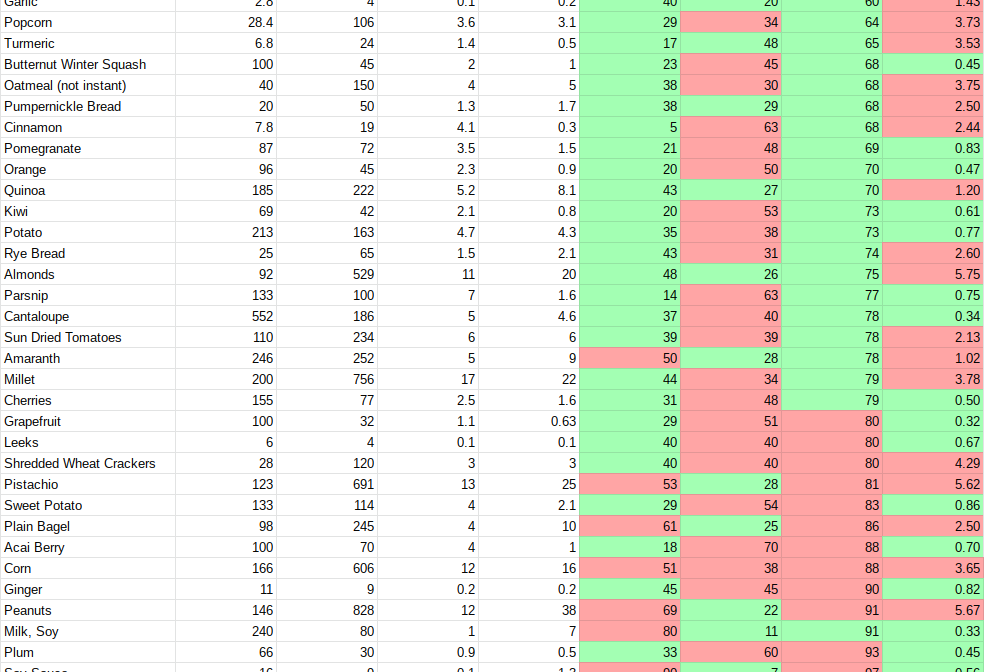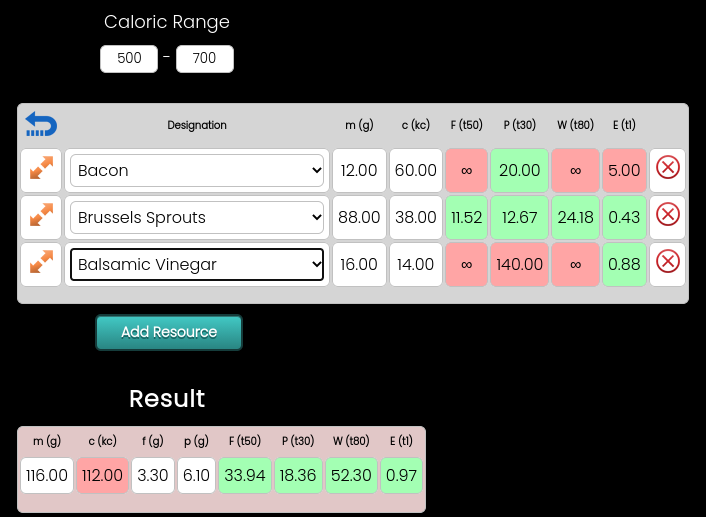The Wellness System is the mathematical underpinning for the calculators on this site. Structures are what give The Wellness System meaning. When you use the calculators, you are creating structures, namely a formation or a grid. By creating structures, you are able to organize and understand information with regard to your eating habits. There are 6 types of structures and each serves a purpose and bears a mathematical underpinning.
- The Resource – the most basic structure, used as a building block
- The List – the simplest multi-resource structure, used for resource access or analysis
- The Formation – the structure intended for tracking
- The Definition – the structure used to nest resources and save space
- The Grid – the structure used for daily tracking and grazing
- The Map – a double list structure organized by W and E used for resource reference and importation
Structures also have a behavior that allows us to analyze them in an organic manner. We can analyze lists and make generalizations about their contents. We can analyze formations which allows us to balance the composite. We can analyze grids which helps us to understand daily habits. We can analyze maps that tell us the nature of its resources.
The Resource Structure
“Resource” is a convenient way of saying “food” or “drink”. It is also the simplest, lowest-level structure in TWS. If the system is your body, the cell is a resource. Even though it can be divided into pieces, the resource is considered to be fundamental. The resource is an axiom. It is considered to be true since it is made of basic parts. The parts of a resource are:
- Designation – the name of the resource
- Components – the amounts of mass, Calories, fiber, and protein
- Expression – the 4 metrics derived from the relationships between the components
A resource looks like this (open in new tab):
![]()
Resources are generally not accompanied by a header row, because they are never seen out of the context of a higher structure. However, for the sake of clarity, this graphic shows you the header information.
The List Structure
The list is a structure used for grouping resources and analysis. It is the simplest way to piece resources together and create a form of analysis through sorting. A list can reveal which resources are better with certain parameters. For example, a map sorts according to the W and the E. A list is most commonly used to group resources together. It is also used to create studies and proofs. The parts of a list are:
- Header – designation (named or unnamed) and list parameters
- Collection – a group of resources
- Sort (optional) – parameter used for organizing the list
This is what a list looks like (open in new tab):

The Formation Structure
The formation is a structure designed for tracking. It is similar to the list, however it has a row at the bottom called the “composite” that is an aggregate of the list above. A formation tells you the estimated overall impact a group of resources has. It also serves as a form of analysis. If your composite is unbalanced, you should go back and analyze the collection, fixing problems until the composite is balanced. The parts of a basic formation are:
- Header – designation (named or unnamed) and formation parameters
- Collection – a group of resources
- Composite – a row used for aggregating the collection and analysis
A formation is generally not sorted. This is what a basic formation looks like (open in new tab):

There are two other types of formations that are used for portioning and meal planning. A portioned formation has any number of “tags” that apply a factor to the formation’s composite. This is useful for portioning a recipe like cookies. The parts of a portioned formation are:
- Header – designation (named or unnamed) and formation parameters
- Collection – a group of resources
- Tags – any number of factors applied to the composite (usually scale down). They live right under the composite.
This is what a portioned formation looks like (open in new tab):

Second, a portioned list formation is a formation with a repeated set of components. The components are copied under the composite and the factor is applied to each component. This is useful in portioning for multiple people. The parts of a portioned list formation are:
- Header – designation (named or unnamed) and formation parameters
- Collection – a group of resources
- Composite – a row used for aggregating the collection and analysis
- Portion Row – a row that declares the portion amount
- Portioned Components – the components that have been multiplied by the portion amount
This is what a portioned list formation looks like (open in new tab):

The Definition Structure
The definition is designed for nested resources and reuse. If you find yourself copying and pasting large numbers of the same resources, creating a definition makes sense to save space and effort. The parts of a definition are:
- Header – designation (named or unnamed) and definition parameters
- Collection – a group of resources
- Composite – a row used for aggregating the collection and analysis
- Seed – a row designed for copying and pasting into other structures
This is what a definition looks like (open in new tab):

The Grid Structure
The grid is a structure designed for tracking daily resources. It also simplifies the composite by aggregating the whole day into one global composite; formations, on the other hand, must be tallied in order to determine the global composite. Also, the grid has spaces between resources and resource groups signifying the passage of time. Therefore, it helps you analyze your habits by being organized chronologically. The parts of a grid are:
- Header – designation (named or unnamed) and grid parameters
- Collection – a group of resources, resource groups, and spaces (sorted chronologically)
- Composite – a row used for aggregating the collection and analysis
- Seed – a row designed for copying and pasting into other structures
This is what a grid looks like (open in new tab):

The Map Structure
The map is the largest-scale structure, organized as a double list. The first is sorted by W and the second by E. The map is designed for reference. Those at the top are complete because they do not have division by zero. Those at the bottom are incomplete because they have natural division by zero. One list isn’t better than the other. We need complete resources and we need incomplete resources. The parts of a map are:
- Header – designation (named or unnamed) and map parameters
- Collection 1 – a group of resources organized by W
- Collection 2 – a group of resources organized by E
The resources map is designed to be read-only which means you can copy but you can’t modify. The personal resources map is designed to be modifiable.
This is what a map looks like (open in new tab):

The Wellness System and Calculators
Once you understand the map structure, you will be able to use the smart and the energy calculators. These calculators are sorted according to the W factor or the E factor or both so you will be able to use the sort range as a means of choosing the resources you want to consume. If you want to use The Wellness System in addition to the calculators, you can find it at https://www.thewellnesssystem.org/ It is more powerful than the calculators but it is also more work.





 The Wellness System
The Wellness System